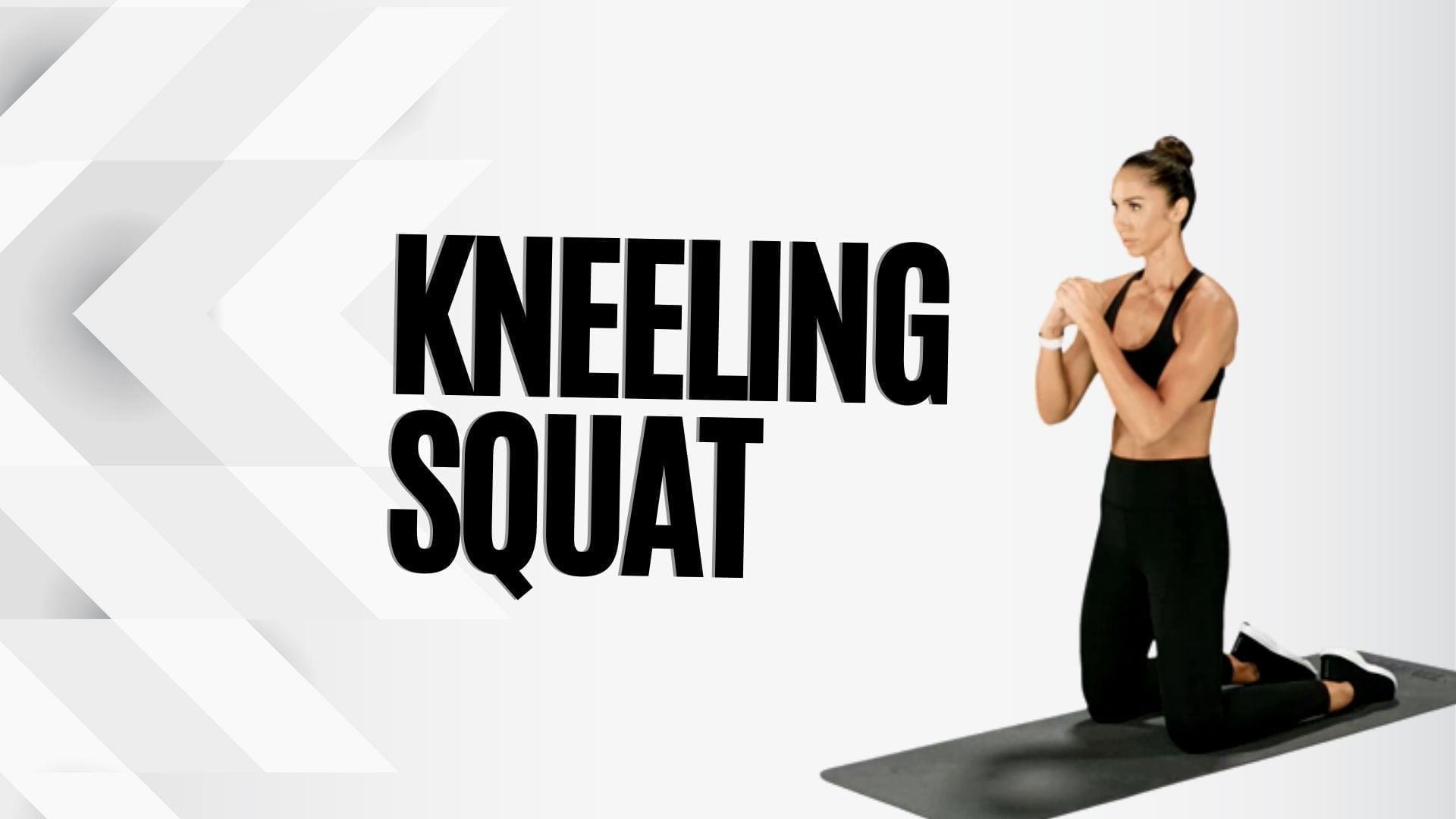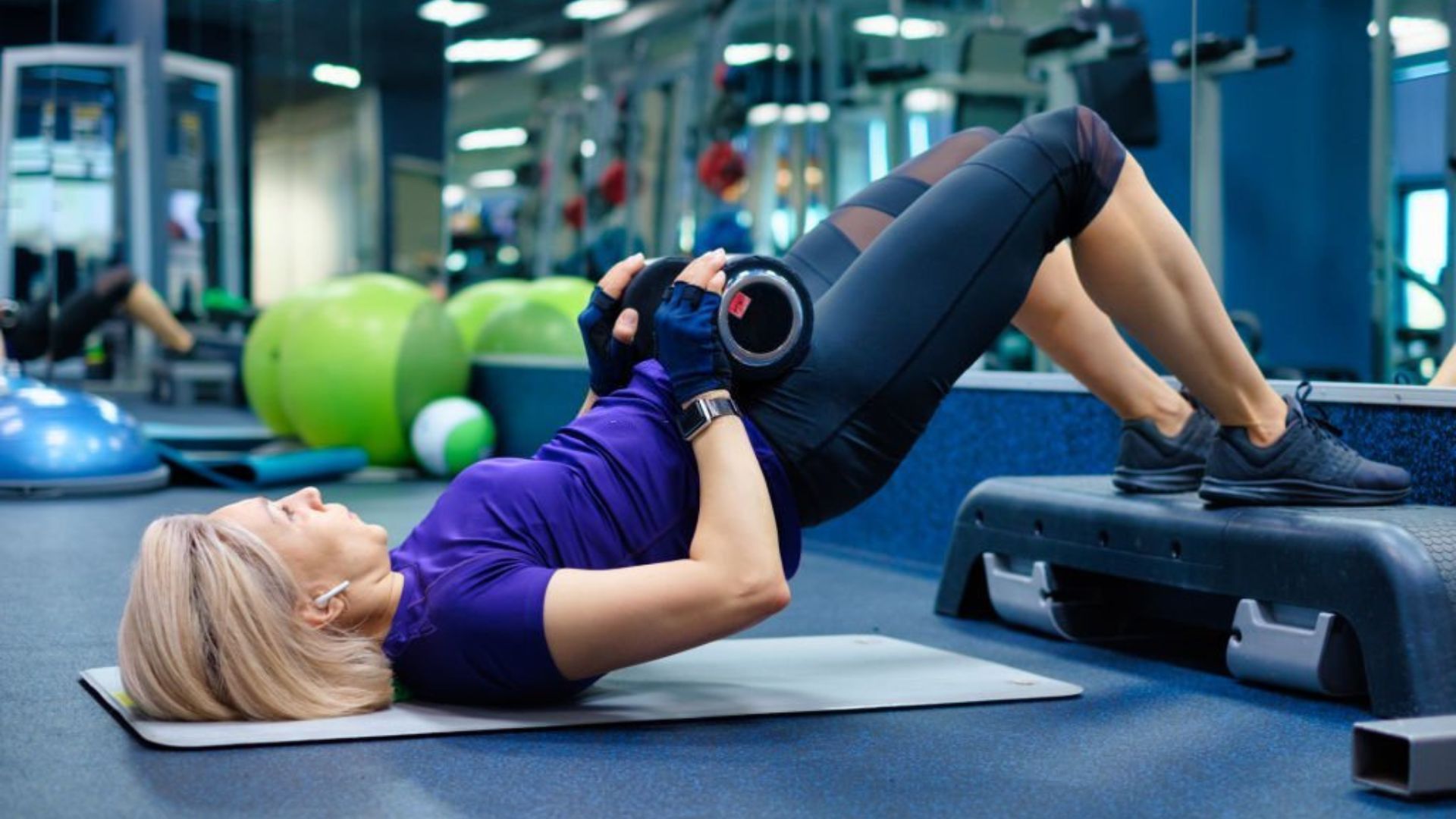
Bulgarian Split Squat: Take Your Leg Workout to Next Level!
Are you looking for a challenging exercise that can help you build lower body strength and improve your balance and stability? Look no further than Bulgarian Split Squat! This squat variation is designed to target your leg muscles, including your quads, hamstrings, and glutes, while also improving your balance and stability. Here at FitGAG, we’ve put together our comprehensive guide to help you master Bulgarian Split Squat and achieve your fitness goals.
Exercise Information
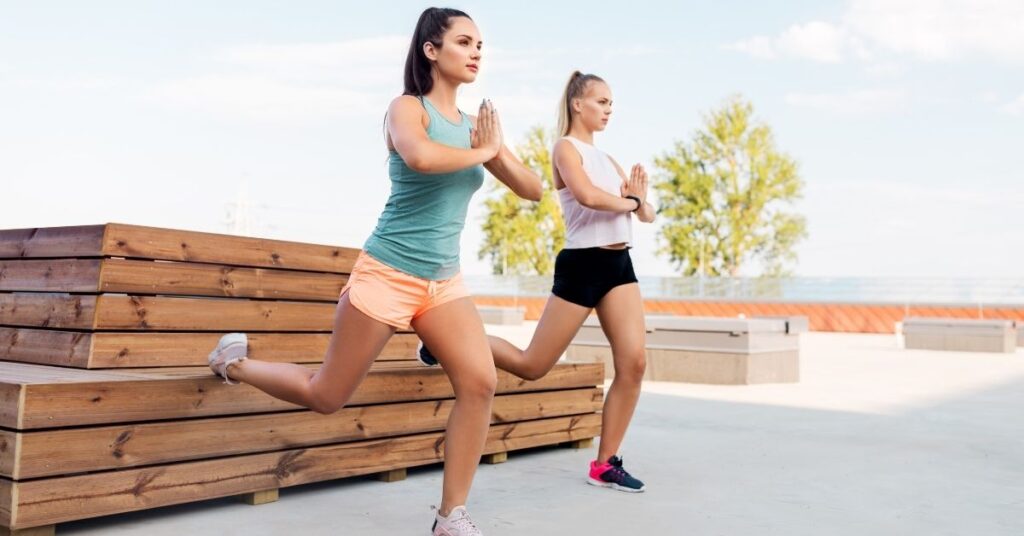
Looking to challenge your leg muscles in a new way? The Bulgarian Split Squat is an excellent exercise to add to your leg day routine. This variation of the Bulgarian Split Squat involves holding weights in a unique way to increase the difficulty of the exercise. Let’s explore some general information about this exercise:
Level
The Bulgarian Split Squat is an intermediate to advanced level exercise that requires a good amount of leg strength, balance, and coordination. It’s not recommended for beginners, as it can be challenging to perform correctly.
Equipment
To perform the Bulgarian Split Squat, you’ll need a set of dumbbells or kettlebells. It’s recommended to use a weight that is appropriate for your fitness level, but it’s also important to challenge yourself.
Type of Exercise
The Bulgarian Split Squat is a compound movement that targets the quads, hamstrings, glutes, and calves. It’s an excellent exercise to add to your leg day routine to strengthen and tone your lower body.
Bulgarian Split Squat: Working Muscles
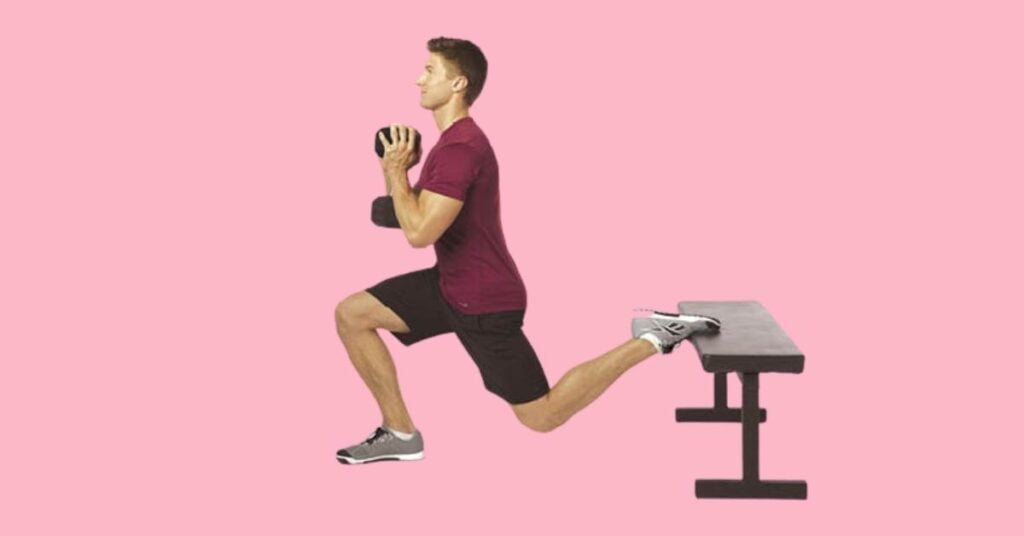
The Bulgarian Split Squat is a unilateral exercise that primarily targets the quadriceps, glutes, and hamstrings. This variation of the Bulgarian split squat involves holding a dumbbell in each hand and rotating the torso to one side while performing the movement. In this section, we will discuss the primary and secondary muscle groups that are involved during the Bulgarian Split Squat exercise.
Primary Muscle Group: Quadriceps, Glutes, and Hamstrings
The primary muscle group targeted during the Bulgarian Split Squat is the quadriceps, glutes, and hamstrings. The quadriceps, located on the front of the thigh, are responsible for extending the knee joint and are heavily activated during the movement. The glutes, located in the buttocks, are responsible for hip extension and are also engaged to a significant extent during the exercise. The hamstrings, located on the back of the thigh, are responsible for knee flexion and hip extension and are activated as stabilizers during the movement. By performing the Bulgarian Split Squat, all three muscle groups are engaged in a unilateral fashion to promote balance and stability between the legs.
Secondary Muscle Group: Core and Calves
In addition to the primary muscle groups, the Bulgarian Split Squat also engages the core and calves to a lesser extent. The core muscles, including the rectus abdominis, obliques, and transverse abdominis, are responsible for stabilizing the spine and maintaining proper posture during the exercise. The calves, located on the back of the lower leg, are responsible for plantar flexion and are activated to help stabilize the ankle joint during the movement.
By engaging both the primary and secondary muscle groups, the Bulgarian Split Squat provides a comprehensive workout for the legs, glutes, and core. This makes it an effective exercise for building lower body strength, improving overall balance and stability, and enhancing athletic performance.
In the next section, we will discuss the benefits of the Bulgarian Split Squat exercise in more detail.
Benefits of Bulgarian Split Squat

Bulgarian Split Squat is a lower body exercise that targets your quads, hamstrings, and glutes, while also adding a challenge with a dumbbell or kettlebell. Here are five benefits of incorporating this exercise into your fitness routine:
- Builds Lower Body Strength: Bulgarian Split Squat targets your quads, hamstrings, and glutes, making it an effective exercise for building lower body strength.
- Improves Balance and Stability: Bulgarian Split Squat requires balance and stability, which can improve your overall body control and reduce the risk of injury.
- Increases Hip Mobility: Bulgarian Split Squat requires greater hip mobility, which can improve your overall flexibility with regular practice.
- Enhances Athletic Performance: Bulgarian Split Squat is a functional exercise that can help enhance your performance in sports or other athletic activities that require lower body strength, balance, and stability.
- Can Be Modified: Bulgarian Split Squat can be modified to increase or decrease the difficulty level. For example, you can perform them with a heavier weight to make them more challenging, or you can perform them with a lighter weight to make them easier.
By incorporating Bulgarian Split Squat into your fitness routine, you can enjoy these benefits and more. Whether you’re looking to build lower body strength, improve balance and stability, increase hip mobility, enhance your athletic performance, modify the exercise difficulty, or add variety to your workout routine, Bulgarian Split Squat is a great choice.
Step By Step Instructions for Bulgarian Split Squat
The Bulgarian Split Squat is a challenging exercise that targets your quadriceps, hamstrings, and glutes while also improving your balance and stability. Here’s how to perform the exercise correctly:
Starting Position
- Stand with your back facing a bench or sturdy platform, and place the top of your left foot on the bench.
- Hold a dumbbell in each hand, with your arms by your sides.
Instructions
- Begin by bending your right knee and lowering your body towards the ground, keeping your left foot on the bench and your back straight.
- Pause briefly at the bottom of the movement, feeling a stretch in your quadriceps, hamstrings, and glutes.
- Push your body back up to the starting position by extending your right knee and hip, pushing through your right heel.
- Repeat for the desired number of reps, focusing on maintaining proper form and control throughout the exercise.
Switch legs and repeat the movement with your right foot on the bench.
Bulgarian Split Squat – Proper Form and Technique

The Bulgarian split squat is a challenging leg exercise that targets your quadriceps, glutes, and hamstrings. Bulgarian Split Squat adds an extra challenge by adding a resistance band to the exercise. It requires proper form and technique to perform safely and effectively.
Starting Position
- Begin by placing a resistance band around your waist and securing it to a sturdy object behind you.
- Stand in front of a bench or step with your feet hip-width apart.
Proper Form and Technique
- Step Your Left Foot Back: Step your left foot back and place the top of your foot on the bench or step behind you.
- Bend Your Right Knee: Bend your right knee and lower your body towards the ground, keeping your torso upright and your front knee behind your toes.
- Engage Your Core: Engage your core muscles by pulling your belly button towards your spine.
- Stand Back Up: Stand back up, pushing through your front heel and extending your leg fully.
- Repeat on the Other Side: Bring your left foot back to the starting position and repeat the exercise on the other side, stepping your right foot back and bending your left knee.
- Keep Your Body Straight: Keep your body straight throughout the exercise, avoiding any twisting or arching of your back.
- Keep Your Shoulders Level: Keep your shoulders level throughout the exercise, avoiding any dipping or twisting.
- Don’t Overdo It: Do not overdo it when first starting out. Begin with a light resistance band and gradually increase the resistance over time.
- Breathe: Remember to breathe throughout the exercise. Inhale deeply as you lower your body towards the ground, and exhale as you stand back up.
- Use Proper Form: Use proper form throughout the exercise, keeping your front knee behind your toes and your torso upright.
By following these tips, you can perform the Bulgarian Split Squat with proper form and technique, effectively targeting your leg muscles while also challenging your balance and stability. Remember to start slowly, focus on your form, and gradually increase the resistance used over time. This exercise is an effective way to strengthen your lower body and improve your overall fitness level.
Frequency and Progression: How to Progress with Bulgarian Split Squat for Maximum Leg Development
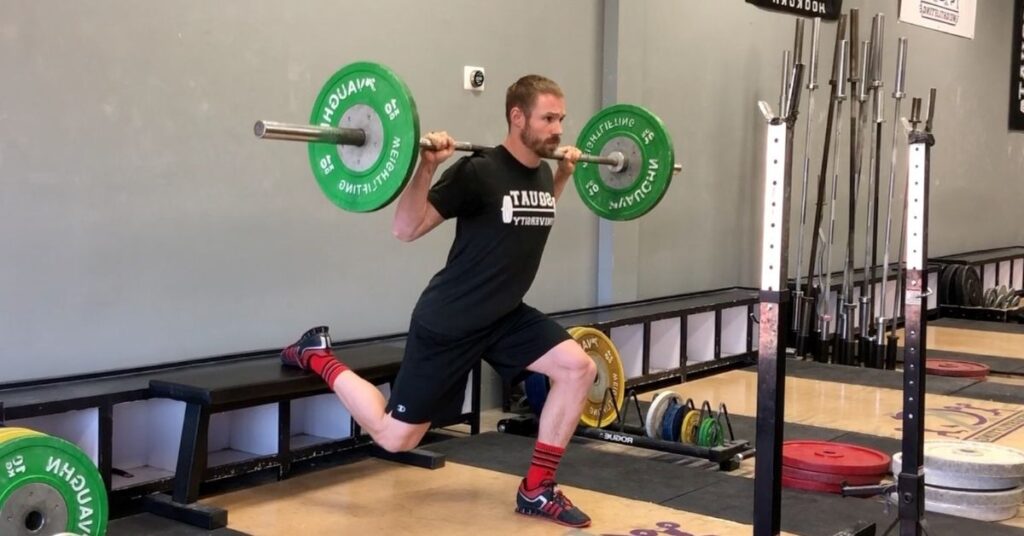
The Bulgarian Split Squat is an advanced variation of the Bulgarian split squat that targets the quadriceps, glutes, and hamstrings. This exercise is named after Kris Gethin, a well-known fitness coach who popularized this exercise in his training programs. In this section, we will discuss how to properly progress with Bulgarian Split Squat for maximum leg development.
Frequency
To effectively train the legs with the Bulgarian Split Squat, it is recommended to perform this exercise 1-2 times per week. However, it is important to also incorporate other exercises that target the legs, such as squats, lunges, and deadlifts, to ensure overall lower body development.
Progressive Overload
As with any exercise, it is important to progressively overload the legs over time in order to see continued gains in strength and size. One way to progress with the Bulgarian Split Squat is to increase the weight used, or to increase the number of reps or sets performed. Another way to increase the difficulty of the exercise is to slow down the tempo of the movement, or to pause at the bottom of the movement.
Periodization
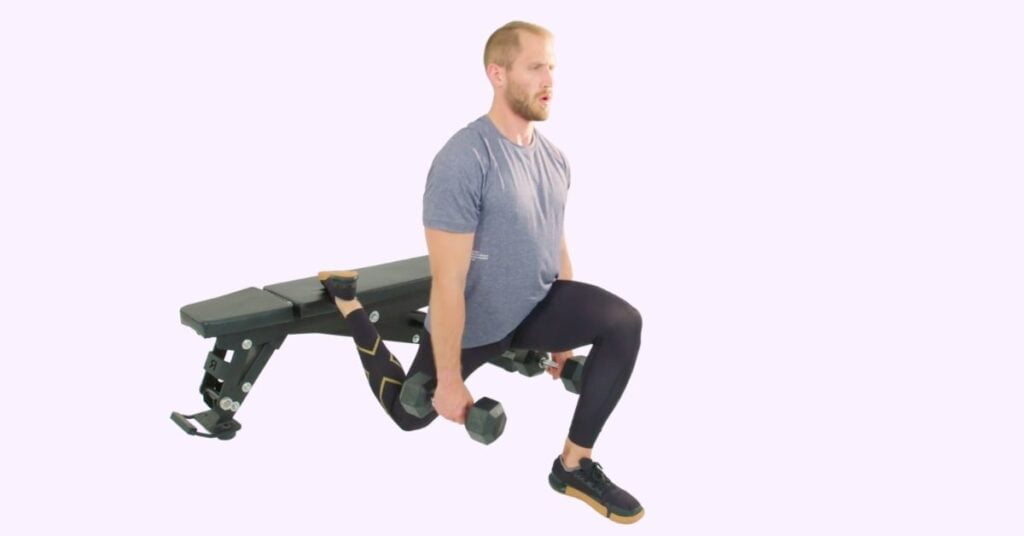
To avoid plateaus in your training and continue seeing progress, it is important to vary the volume and intensity of your Bulgarian Split Squat workouts over time. One way to do this is through periodization, which involves breaking your training into different phases. For example, you could focus on higher reps and lower intensity for 4-6 weeks to improve endurance, then switch to lower reps and higher intensity for 4-6 weeks to improve strength.
Mix It Up
To avoid boredom and ensure you are hitting the legs from different angles, it is important to mix up your exercises. In addition to the Bulgarian Split Squat, there are several exercises that target the legs, such as squats, lunges, and leg press. You can also vary the position and angle of your exercises to target different areas of the legs.
Track Your Progress
To ensure you are making progress and staying on track with your Bulgarian Split Squat workouts, it is important to track your progress. Keep a workout journal or use a fitness app to log the weight and reps used for each exercise, as well as the difficulty level of the Bulgarian Split Squat. This will help you identify areas where you need to improve and keep you motivated to continue pushing yourself.
Incorporating Bulgarian Split Squat exercises into your workout routine can be a great way to improve overall lower body strength and size. By following these tips for frequency, progressive overload, and periodization, you can ensure that you are effectively training your legs and reaching your fitness goals.
Mistakes of Bulgarian Split Squat
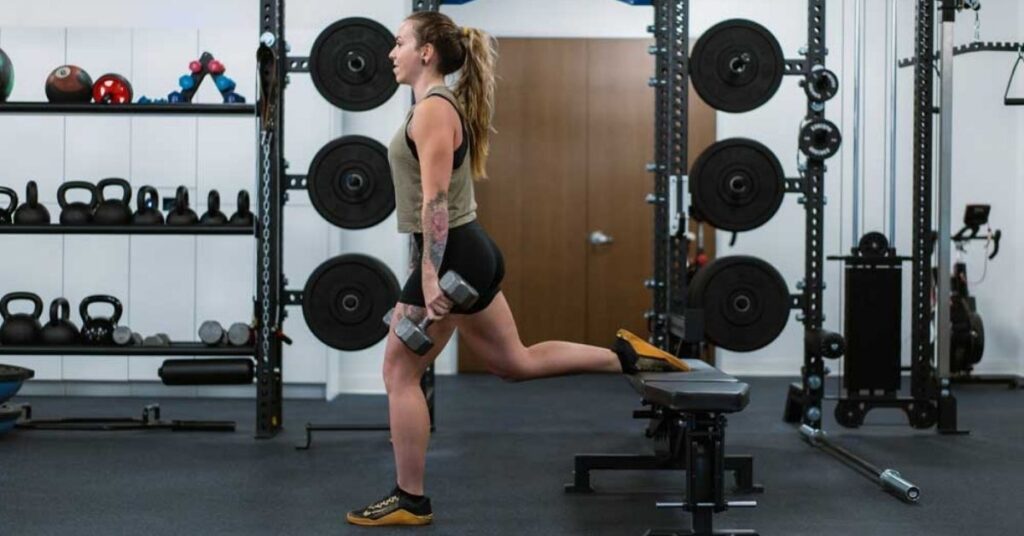
The Bulgarian split squat is a unilateral exercise that targets your quadriceps, hamstrings, and glutes muscles while also improving your balance and stability. Bulgarian Split Squat of this exercise involves holding a dumbbell in front of your chest to increase the resistance and challenge your muscles even further. However, performing this exercise with improper form can lead to discomfort or even injury. Here are five common mistakes to avoid when performing the Bulgarian Split Squat:
- Not using the proper form: Not using the proper form during the Bulgarian Split Squat can reduce the effectiveness of the exercise and put excessive stress on your joints. Instead, focus on keeping your front knee over your ankle, your back knee close to the floor, and your torso upright.
- Not using the appropriate weight: Using too much weight can reduce the effectiveness of the exercise and increase the risk of injury. Instead, start with a lighter weight and gradually increase the weight as you become more comfortable with the exercise.
- Not engaging your core: Not engaging your core during the Bulgarian Split Squat can reduce the effectiveness of the exercise and put excessive stress on your lower back. Instead, engage your core muscles throughout the movement to maintain proper posture and control.
- Not using the appropriate step height: Using a step height that is too high or too low can reduce the effectiveness of the exercise and increase the risk of injury. Instead, use a step height that allows your front knee to be at a 90-degree angle when you lunge.
- Not breathing properly: Not breathing properly during the Bulgarian Split Squat can reduce the effectiveness of the exercise and increase the risk of injury. Instead, inhale as you lower your body down and exhale as you push back up.
By avoiding these common mistakes, you can safely and effectively perform the Bulgarian Split Squat to challenge your leg muscles while improving your balance and stability. Remember to always listen to your body and stop the exercise if you experience any discomfort or pain.
Variations of the Bulgarian Split Squat: Enhance Your Leg Workout
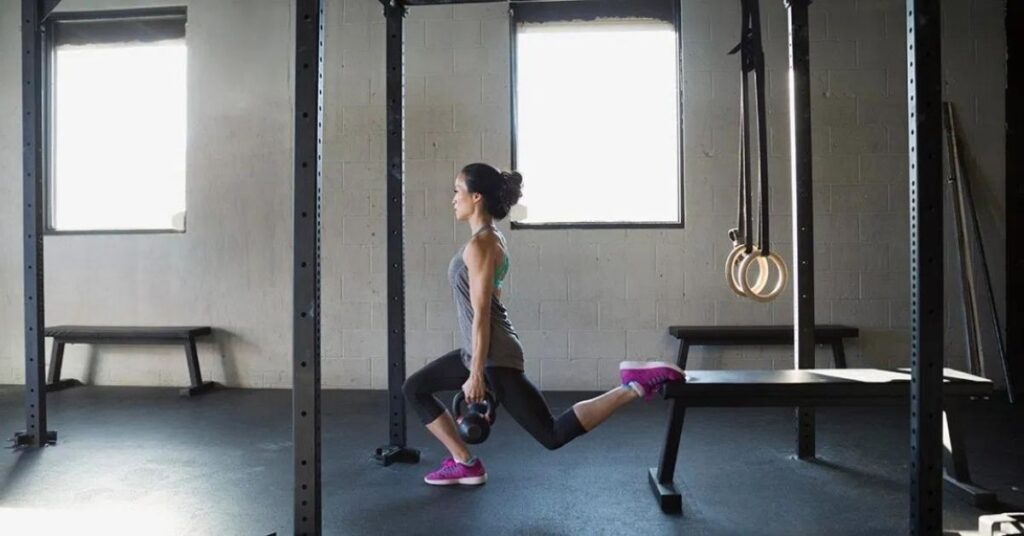
The Bulgarian Split Squat is an advanced exercise that targets your quads, glutes, and hamstrings. Here are some variations to enhance your leg workout:
Bulgarian Split Squat with Dumbbells
This variation adds an extra challenge to the Bulgarian Split Squat by requiring you to hold dumbbells in your hands. This can help to increase resistance and strengthen your grip.
- Hold a dumbbell in each hand with your palms facing inwards and your arms at your sides.
- Perform the Bulgarian Split Squat as you would normally, holding the dumbbells throughout the exercise.
Bulgarian Split Squat with a Pulse
This variation requires you to perform a pulse at the bottom of the Bulgarian Split Squat, which increases the time under tension for your muscles. Perform the Bulgarian Split Squat as you would normally, but instead of standing up after each rep, pulse up and down at the bottom of the squat before standing up.
Bulgarian Split Squat with a Knee Drive
This variation adds an extra cardio element to the Bulgarian Split Squat by requiring you to perform a knee drive after each rep. Perform the Bulgarian Split Squat as you would normally, but after standing up, bring your knee towards your chest and drive it forward before returning to the starting position.
Bulgarian Split Squat with a Calf Raise
This variation targets your calves in addition to your quads, glutes, and hamstrings. Perform the Bulgarian Split Squat as you would normally, but after standing up, perform a calf raise before returning to the starting position.
Bulgarian Split Squat with a Jump
This variation adds an explosive element to the Bulgarian Split Squat by requiring you to jump after each rep. Perform the Bulgarian Split Squat as you would normally, but after standing up, jump off the ground before returning to the starting position.
Incorporating these variations into your leg workouts can help to keep your routine fresh and challenging, while also targeting different areas of your lower body. As always, make sure to use proper form and technique to avoid injury.
Bulgarian Split Squat: 5 Alternatives to Build Stronger Legs
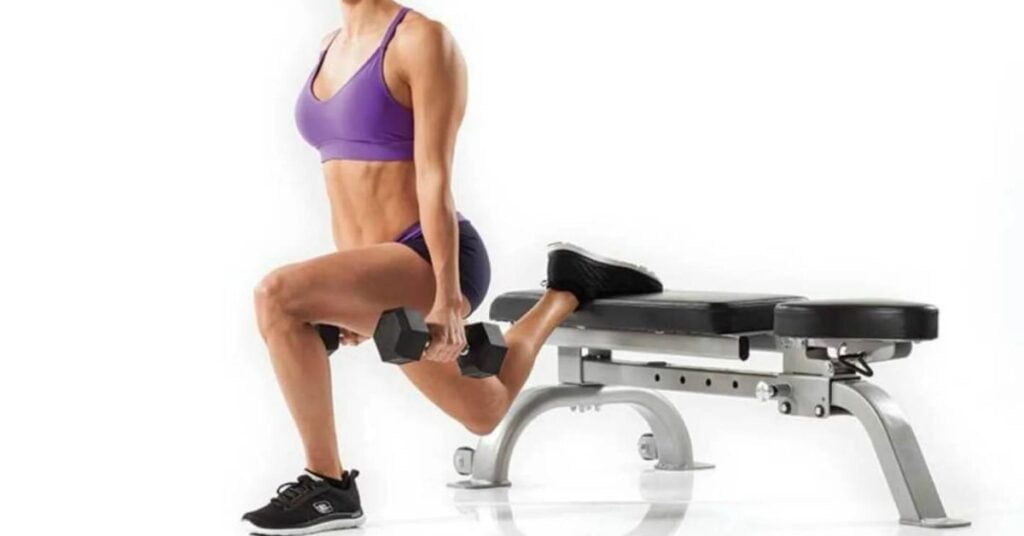
The Bulgarian Split Squat is a challenging exercise that targets your legs and glutes while improving your balance and stability. However, if you’re looking to mix up your leg day routine or don’t have access to weights, there are plenty of alternatives that can be just as effective. In this section, we’ll explore five alternatives to the Bulgarian Split Squat that you can try today.
Reverse Lunges
Reverse lunges are a great alternative to the Bulgarian Split Squat that target your legs and glutes.
- To perform a reverse lunge, start by standing with your feet hip-width apart.
- Step back with one foot and lower your body towards the ground by bending your knees, keeping your back straight and your core engaged.
- Push back up to the starting position and repeat with the other leg.
- Repeat for 3-5 sets of 10-15 reps.
Step Ups
Step ups are another effective exercise that target your legs and glutes.
- To perform a step up, find a sturdy box or bench and step onto it with one foot.
- Push through your heel to stand up straight on the box, and then step back down with the same foot.
- Repeat for 3-5 sets of 10-15 reps on each leg.
Single Leg Deadlifts
Single leg deadlifts are a challenging exercise that target your legs, glutes, and core.
- To perform a single leg deadlift, stand on one leg with your knee slightly bent.
- Hinge forward at the hips, lifting your other leg behind you for balance, and lower your body towards the ground.
- Return to the starting position and repeat for 3-5 sets of 10-15 reps on each leg.
Wall Sits
Wall sits are a great isometric exercise that target your legs and glutes.
- To perform a wall sit, stand with your back against a wall and slide down until your thighs are parallel to the ground.
- Hold this position for 30-60 seconds and repeat for 3-5 sets.
Calf Raises
Calf raises are a great exercise that target your calves and can be performed without any equipment.
- To perform a calf raise, stand with your feet shoulder-width apart and lift your heels off the ground, rising up onto the balls of your feet.
- Lower back down and repeat for 3-5 sets of 10-15 reps.
Incorporating alternatives to the Bulgarian Split Squat into your leg day routine is a great way to keep your workouts fresh and challenging. These five exercises target your legs and glutes while improving your overall fitness. Give them a try and see how they work for you! Remember to always listen to your body and consult with a healthcare professional if you experience any pain or discomfort.
Bulgarian Split Squat: Tips and Tricks for Building Leg Strength and Balance

The Bulgarian Split Squat is a challenging exercise that targets your legs, glutes, and core muscles. This exercise is a variation of the traditional Bulgarian Split Squat, and it involves performing the exercise while holding a dumbbell in one hand. In this section, we’ll share some tips and tricks to help you perform Bulgarian Split Squat correctly and get the most out of it.
- Assume the Starting Position: Begin by standing with your back to a bench, holding a dumbbell in your right hand. Place your left foot on the bench behind you, with your toes resting on the bench.
- Perform the Squat: Bend your right knee and lower your body down towards the ground, while keeping your left leg straight. Lower your body until your right thigh is parallel to the ground.
- Engage Your Core: To perform Bulgarian Split Squat, you need to engage your core muscles. So, before you begin the exercise, take a deep breath, and brace your core muscles. This action stabilizes your torso and helps you maintain proper form during the exercise.
- Use Proper Form: Use proper form when performing Bulgarian Split Squat, which means keeping your torso upright, and avoiding any leaning forward or backward.
- Keep Your Balance: Balance is an essential part of Bulgarian Split Squat. To maintain your balance, focus on a fixed point in front of you, and keep your core engaged.
- Don’t Overdo It: Bulgarian Split Squat can be a challenging exercise, so don’t overdo it. Start with a few reps and gradually increase the number of reps and sets as your leg strength and balance improve.
- Stretch Your Legs: Stretching your legs before and after Bulgarian Split Squat can help prevent muscle strain and injury. Stretch your legs by performing standing quad and hamstring stretches.
- Stay Consistent: Consistency is the key to success with any exercise routine. Incorporate Bulgarian Split Squat into your workout routine at least twice a week, and gradually increase the weight, the number of reps and sets as your leg strength and balance improve.
- Use a Spotter: If you’re new to Bulgarian Split Squat, consider using a spotter to help you maintain your balance and prevent injury.
- Have Fun: Bulgarian Split Squat is a fun and challenging exercise, so don’t forget to enjoy yourself. With time and practice, you’ll be able to perform Bulgarian Split Squat like a pro and achieve your fitness goals.
Incorporating these tips and tricks into your Bulgarian Split Squat routine can help you get the most out of this exercise and achieve better leg strength and balance. Remember to always maintain proper form, breathe properly, and listen to your body. With time and practice, you’ll be able to perform Bulgarian Split Squat like a pro and achieve your fitness goals.
Incorporating Bulgarian Split Squat into Your Workout Routine for Maximum Effect
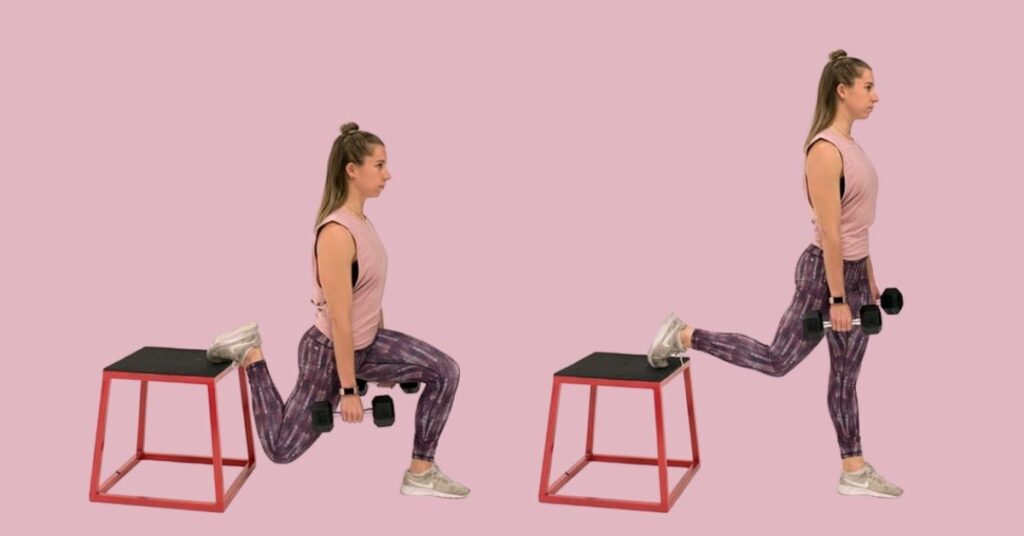
The Bulgarian split squat, also known as the rear-foot elevated split squat, is a great exercise for building lower body strength and balance. Bulgarian Split Squat adds an extra challenge by incorporating a pause at the bottom of the movement. Here are some tips to help you incorporate Bulgarian Split Squat into your workout routine for maximum effect:
- Add Bulgarian Split Squat to your leg workout: Bulgarian split squats are a great addition to your leg workout routine. They can be performed as part of a circuit or as a standalone exercise.
- Set up for the exercise: Place a bench or a step behind you and stand facing away from it. Place the top of your left foot on the bench or step behind you.
- Position your right foot: Step forward with your right foot and position it so that your knee is directly above your ankle.
- Keep your chest up: Throughout the movement, keep your chest up and your core engaged to maintain good posture.
- Lower your body: Slowly lower your body towards the ground, bending your right knee until your thigh is parallel to the ground. Hold this position for a few seconds before pushing back up to the starting position.
- Control your breathing: Use proper breathing techniques while performing Bulgarian Split Squat. Inhale as you lower your body towards the ground and exhale as you push your body back up.
- Repeat on the other side: Repeat the movement on the other side by placing the top of your right foot on the bench or step behind you and stepping forward with your left foot.
- Increase the intensity: As you get comfortable with Bulgarian Split Squat, you can increase the intensity by holding weights in your hands or performing the exercise for longer periods of time.
- Incorporate other leg exercises: To further strengthen your leg muscles, incorporate other exercises such as squats, lunges, or calf raises into your workout routine.
By incorporating these tips into your workout routine, you’ll be well on your way to maximizing the benefits of Bulgarian Split Squat and achieving stronger, leaner, and more toned legs.
Ultimate Workout Plan for Bulgarian Split Squat
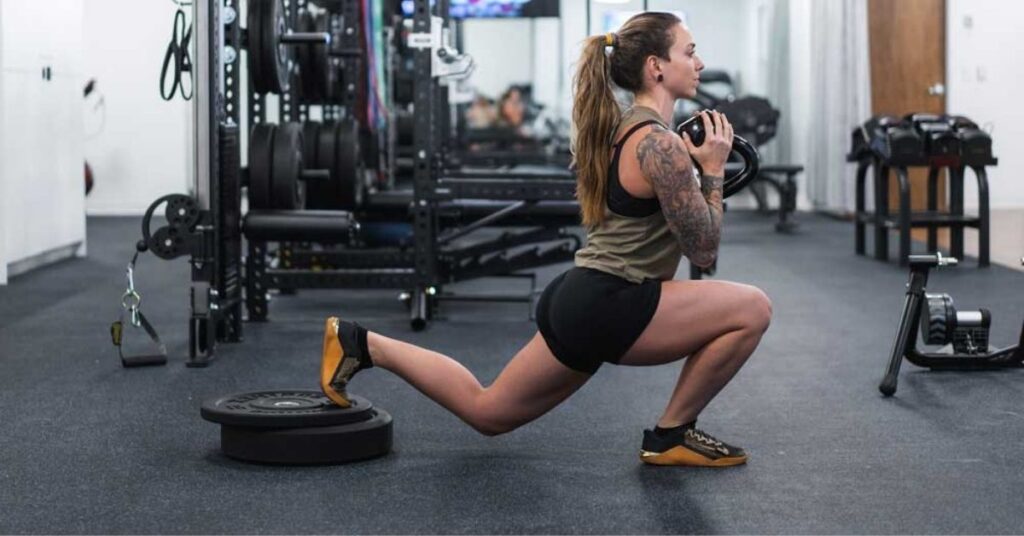
The Bulgarian split squat is a challenging exercise that targets your quads, glutes, and hamstrings while improving your balance and stability. Bulgarian Split Squat adds an extra challenge by incorporating a pause at the bottom of the movement. Here’s a one-week workout plan to help you master the Bulgarian Split Squat.
Day 1: Lower Body
- Warm-up: 5-10 minutes of cardio
- Barbell Squats: 3 sets x 10 reps
- Bulgarian Split Squat: 3 sets x 10 reps (each leg)
- Romanian Deadlifts: 3 sets x 10 reps
- Calf Raises: 3 sets x 12 reps
- Cool-down: 5-10 minutes of stretching
Day 2: Rest Day
Day 3: Upper Body
- Warm-up: 5-10 minutes of cardio
- Pull-ups: 3 sets x 10 reps
- Bench Press: 3 sets x 10 reps
- Inverted Rows: 3 sets x 10 reps
- Bulgarian Split Squat: 3 sets x 10 reps (each leg)
- Tricep Pushdowns: 3 sets x 12 reps
- Cool-down: 5-10 minutes of stretching
Day 4: Rest Day
Day 5: Full Body
- Warm-up: 5-10 minutes of cardio
- Deadlifts: 3 sets x 10 reps
- Push-ups: 3 sets x 10 reps
- Bulgarian Split Squat: 3 sets x 10 reps (each leg)
- Pull-ups: 3 sets x 10 reps
- Plank: 3 sets x 30 seconds
- Cool-down: 5-10 minutes of stretching
Day 6: Rest Day
Day 7: Lower Body
- Warm-up: 5-10 minutes of cardio
- Barbell Lunges: 3 sets x 10 reps (each leg)
- Leg Press: 3 sets x 12 reps
- Bulgarian Split Squat: 3 sets x 10 reps (each leg)
- Leg Extensions: 3 sets x 12 reps
- Calf Raises: 3 sets x 12 reps
- Cool-down: 5-10 minutes of stretching
Incorporating the Bulgarian Split Squat into your weekly workout routine can help you improve your lower body strength and balance. Remember to maintain proper form and technique, and gradually increase the weight and reps as you progress. Happy squatting!
Conclusion
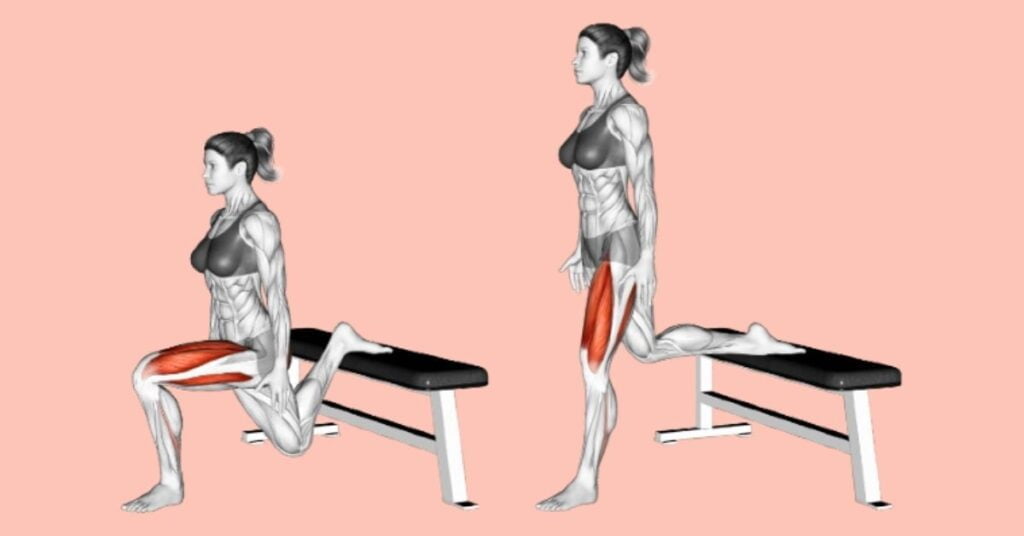
Bulgarian Split Squat is undoubtedly a challenging exercise that requires proper form and technique to avoid injury and maximize results. However, the benefits of this squat variation are significant, from building lower body strength to improving balance and stability. By incorporating Bulgarian Split Squat, you can add an extra challenge to the exercise and target different areas of your leg muscles, leading to more significant muscle activation and growth. So, if you’re looking to take your leg workout to the next level and challenge yourself with a new variation, give Bulgarian Split Squat a try and see the results for yourself. Thanks for reading, and keep fit with FitGAG!





